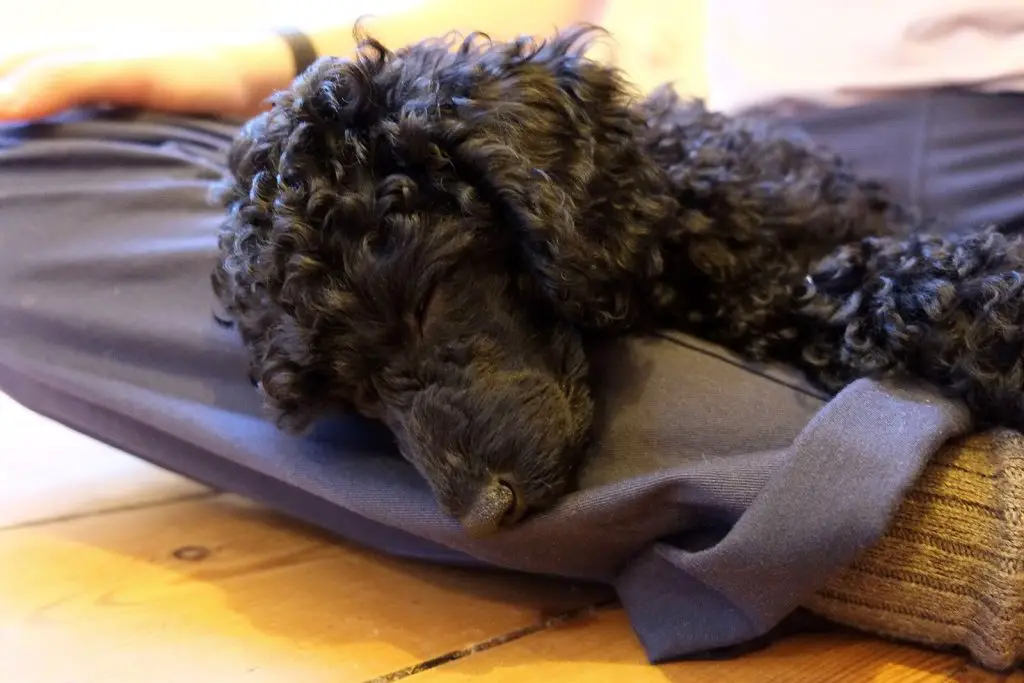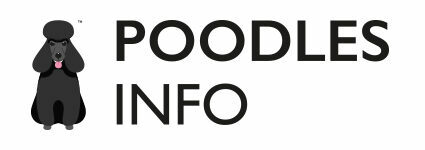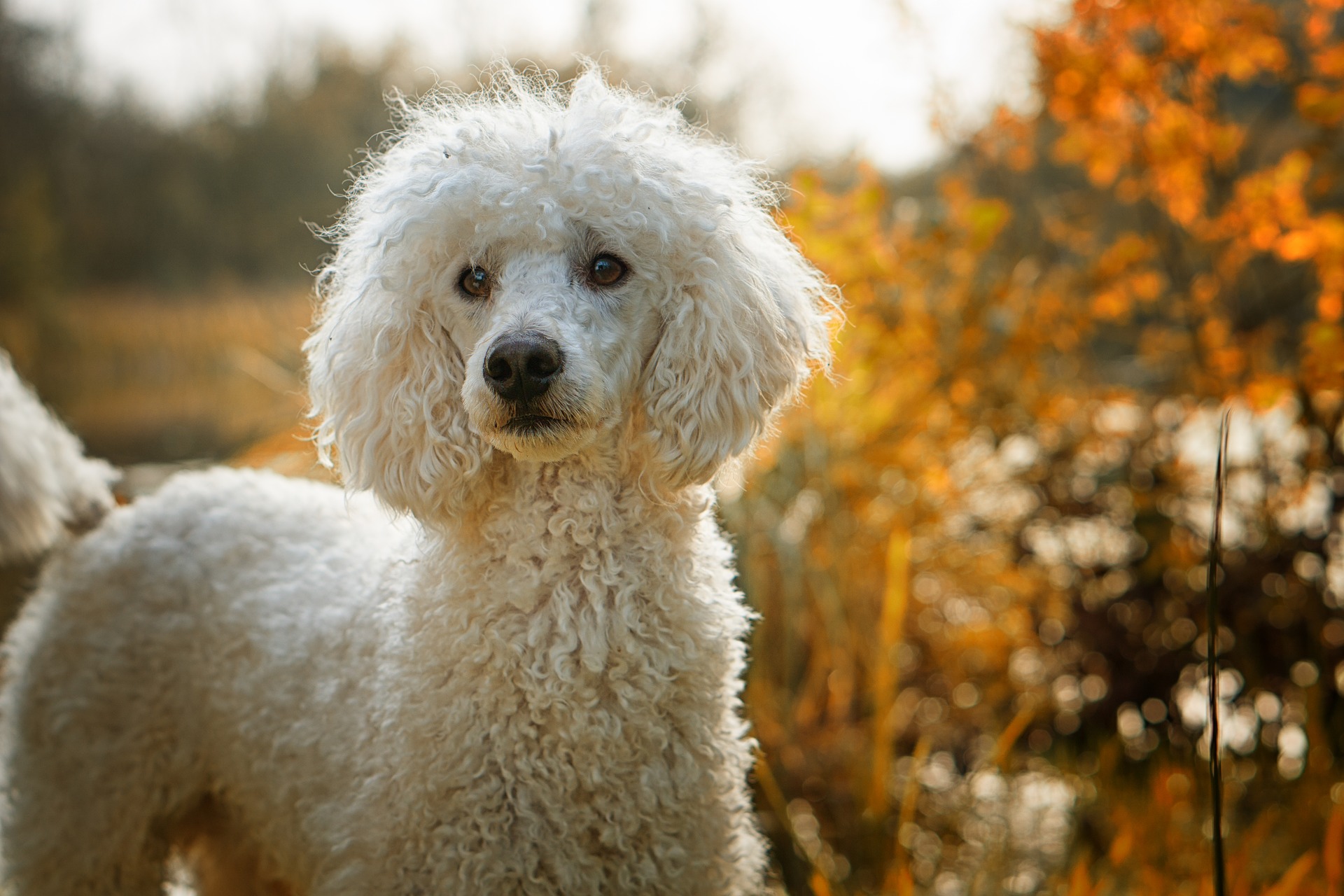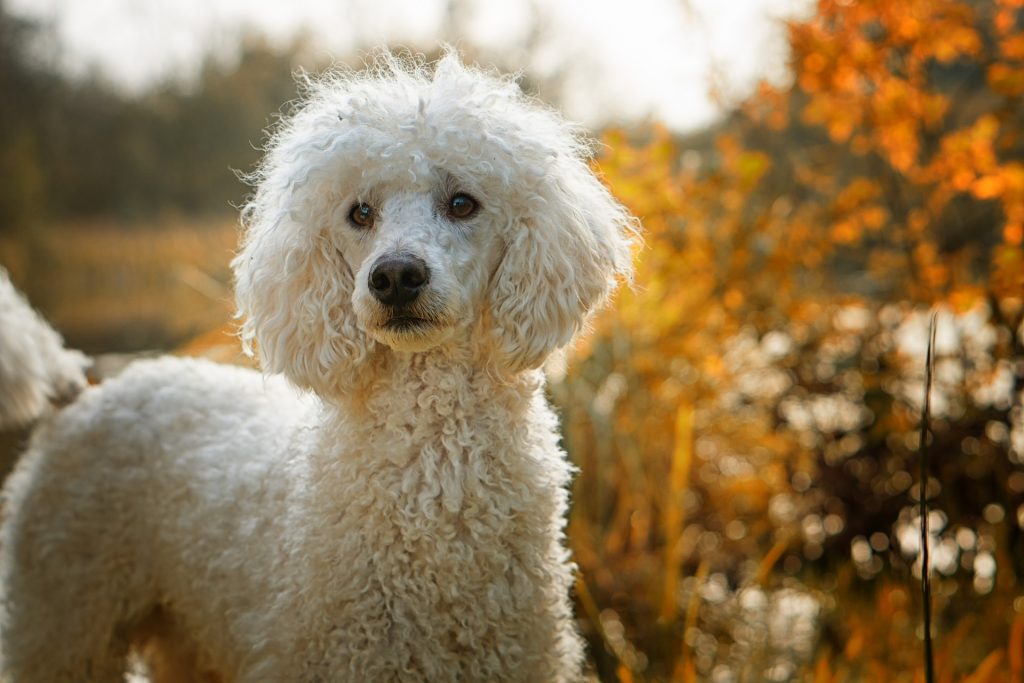When Do Poodles Get Their Curls? Quick Ways To Improve Their Beautiful Curls
One of the main reasons people love poodles so much is their soft, curly, fluffy coat- there’s honestly nothing better than coming home after a long day of work to be greeted by a literal ball of fluff and curls…
But something people ask a lot is, when do poodles lose their straighter wavy puppy coat and get their thick curls?
Toy poodles, miniature poodles, and standard poodles get their curls at around 9 months old. Most poodles will have their full curly adult coat by the time they are 1 ½ years old, but some will have to wait until 2 years.
There is a slight difference with the amount of time the adult coat takes to grow in, or transition period between standard, miniature, and toy poodles. Poodles going through this transition period can look a bit ragged and patchy and will need to be brushed regularly so their new coat does not matt and tangle. Bear in mind that if you allow a poodle’s coat to get matted it may need to be shaved off in that area entirely!
Standard poodles tend to their full curly adult coat within 3 months of the transition from puppy fur to adult fur beginning. Whereas when the transition starts for miniature and toy breeds it can take around 9 months of gradual change.
Why do poodle puppies have a different coat to adults?

A poodle puppy’s wavy coat
All breeds of dogs are born with a slightly different puppy coat, which will eventually be replaced by their adult coat. Puppies (poodles included) have a fluffier, downy, single-layer coat when they are born. This is to help them keep warm as a fluffier coat means more warm air trapped close to the skin and better insulation.
Most puppies start to shed their puppy coat when they are around 6 months old and most dog breeds go on to grow a new coat with two layers of fur (a fluffy undercoat and a smoother outercoat). However, at this point poodles do something different from other dog breeds, and instead of growing a double coat, they grow one single coat of curly fur…
Sometimes toy poodles, miniature poodles, and standard poodles will change color slightly at this age, light apricot or cream-colored poodle puppies will sometimes turn white or cream. This is normal and natural, though your poodle may look a little patchy during this transition…
Why is poodle hair different?
Toy poodle’s, miniature poodle’s, and standard poodle’s hair or fur is different from other dog breeds because when they are fully grown they have a single coat of thick, tightly curled hair. Most other dog breeds have two layers of fur, a short warm undercoat, and a smoother top coat.
Poodle fur needs to be trimmed and brushed regularly, as the curls prevent most hair loss and means fur can get matted and very long if not cared for properly. When a poodle’s curly hair is brushed, the individually curly hair fibers are separated, giving the cloud-like, bouncy ‘doo known in the show rings. After a poodle has been groomed to give this appearance, gradually over the course of a few weeks, the hair will return to it’s natural, more ringlet-like state. If a poodle’s hair gets wet it will curl again quickly.
Toy poodles, miniature poodles, and standard poodles are thought to be hypo-allergenic- meaning people who are usually allergic to dogs tend to show fewer allergy symptoms around poodles. Having said that, a small number of people are still allergic to poodles so this hypoallergenic label needs to be taken with a pinch of salt. No dog breed is truly hypo-allergenic to 100% of the population.
The reason why poodles are thought to be hypoallergenic is because the tightly curled coat tends to trap most hair that has fallen out and dead skin. Most people who are allergic to dogs are actually allergic to the dead skin, otherwise known as dander, shed by dogs. As a poodle’s coat traps this dander, people are less likely to suffer allergies around poodles. A handy trick that can really improve people with allergies’ quality of life!
In addition to curly fur trapping the dander, poodles actually have less dander than other dog breeds. For example, a labrador sheds its dander every 3-4 days, whereas a poodle only sheds its dander around ever 21 days. So as well as their curly coat catching and trapping a lot more dander, they produce less- meaning fewer irritating dander particles making their way to those with allergies.
Toy poodles, miniature poodles, and standard poodles coats are also different from other dog breeds because they shed less hair. While they do shed, when hair falls out it tends to be caught in the curly hairs, so it does not rub off onto furniture or clothes as much. I know that when I get cuddles from dogs who aren’t poodles I am shocked by the amount of hair that comes off onto my clothing, because of this I would never get a dog that sheds fur! This makes poodles perfect for those who don’t want to spend large chunks of their life hoovering up dog hair off the couch.
Another reason poodle fur is different from other dog fur is the way it gets styled by humans. Poodles in the show ring are arguably one of the most heavily styled breeds around- giving poodles their distinct look.
Will my poodle’s hair get curly?
Yes, most poodles do develop a curlier coat between 6 and 18 months. If your poodle is less than 18 months it is likely that they simply still have their less-curly puppy coat, so you need to wait for the curls to appear.
If your poodle is over 18 months then it is worth knowing that there is some natural variation between poodles and this can make a difference in how curly they end up as adults. Red, cream and apricot poodles tend to end up with looser curls than their black and white brothers and sisters.
While not having a tightly curled coat does mean that your poodle probably won’t win any prestigious dog shows, as a tightly curled coat is part of the American Kennel Club standards for a poodle, it makes no difference to what a great pet they are.
How do you get poodles to curl?
If your poodle is over 18 months and their hair is not very curly, it’s probably nothing to worry about and is a natural variation. However, if you want to encourage your poodle’s coat to be curlier there are a few things you can try at home.
- Ensure your poodle is getting all the right nutrients it needs. Like humans, if a poodle is undernourished, it will affect their hair. If you’re worried your dog may be nutrient deficient, get them to the vets to be checked over.
- Wash your poodle with some gentle dog shampoo and allow it to try naturally (make sure you have got rid of any mats and tangles first)!
- Use a conditioner on your poodle’s coat and then let it air dry.
- Use a finishing spray or coat dressing finally, to add shine and repel dirt from your poodle’s coat.
If you notice your dog’s skin going red or itchy after using a new product, they may be sensitive or allergic to an ingredient so stop using it right away.
If you notice anything about your poodle’s fur that is cause for concern such as bald patches, scaly or red skin, itchiness or abnormally thick hair, you should take your poodle to the vet to get checked out as these could be signs your dog is allergic to something or unwell.



If my 6month standard gets it’s puppy hair cut short will it affect it from getting curly?
Cutting hair won’t affect how curly dog hair is long term, but very short haircuts will make your dog look less curly, as they have less hair to form curl clumps 🙂
My 5 month old standard poodle has wavy, not curly hair. We hope it turns curly, but wondering if it will and when.
Awesome content…My friend recently got a Poodle and were wondering how to make her Hair curly…
here you go…
Thanks for blog
\best
Div
My 14 month old standard poodle has tight curls on her head, tail and shoulders, and only waves along the back and belly, ears and legs. I thought she would get all curly but she didn’t. It’s a great and curious look. Her DNA profile said she had curly genes. But, wavy must be included in the genetic variation.